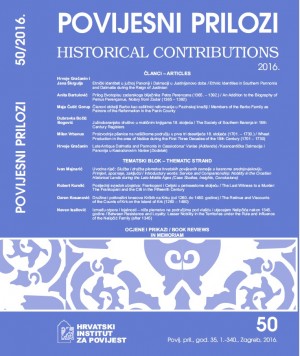Author(s): Milenko Lončar,Teuta Serreqi Jurić / Language(s): Croatian
Issue: 54/2018
In his work De Administrando Imperio, Byzantine Emperor Constantine VII Porphyrogenitus (913-959) differentiates between two Croatias – the Dalmatian or “baptized” Croatia, and the “unbaptized” one, which is also identified by using the terms “Great” or “White Croatia”, an area whence its inhabitants, the White Croats, moved to Dalmatian Croatia. The original homeland of the Croats is localized in several chapters of the text – in chapter 30, where the author uses geographical designations such as “beyond Bavaria” and “against Francia”, as well as in chapter 32, where he says that the White Croats and the Franks are neighbours of “the unbaptized Serbs, also called 'white', who live beyond Turkey in a place called by them Boïki”. The most precise localization is, however, found in Chapter 31, where, other than stylizations such as “beyond Turkey” (i.e. Hungary) and “next to Francia”, or ethnopolitical terms such as “the Turks” (= Hungarians), “the Franks”, “the White Serbs”, or “the Pechenegs”, the author cites the exact distance from the “Dark Sea”, which amounts to thirty days of travel on foot. In identifying the “Dark Sea”, historiographic research has, until now, mostly been divided on the issue of whether or not the Emperor, when using this name (i.e. the Dark Sea), was referring to the Baltic Sea or the Black Sea.
More...










